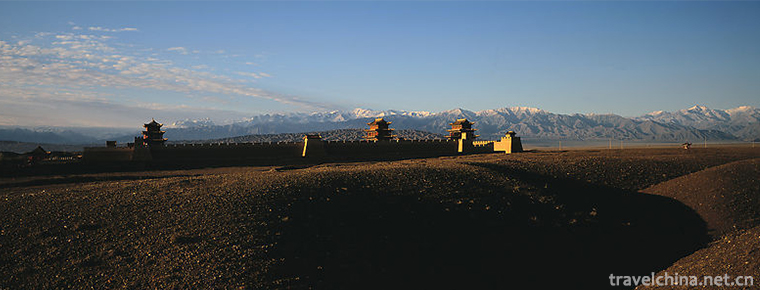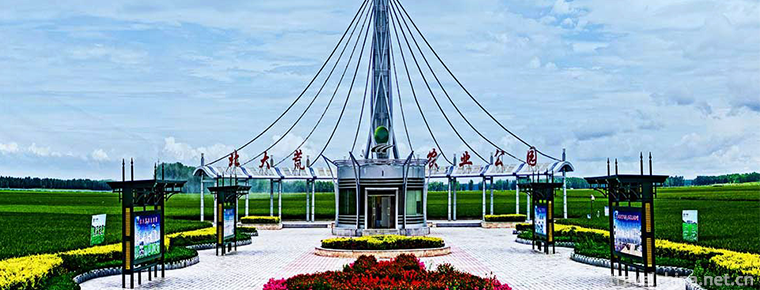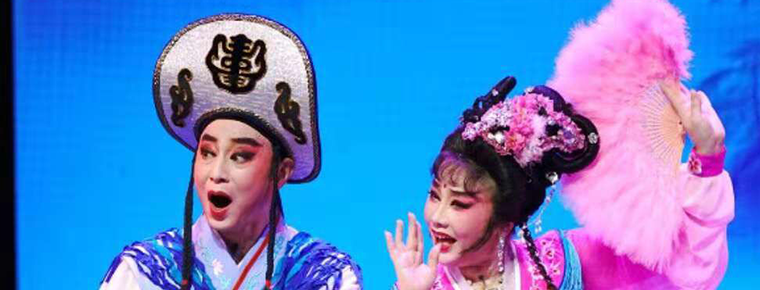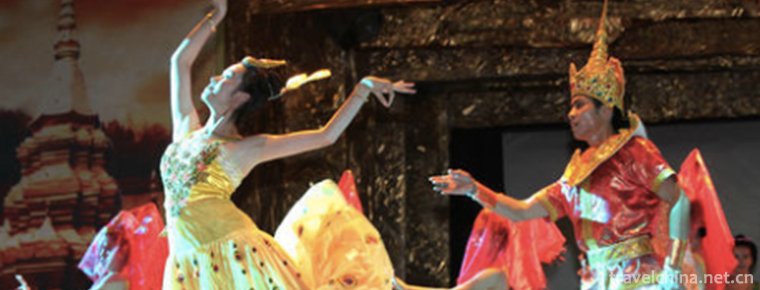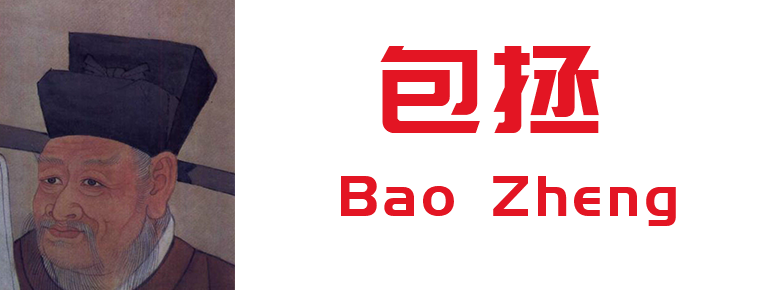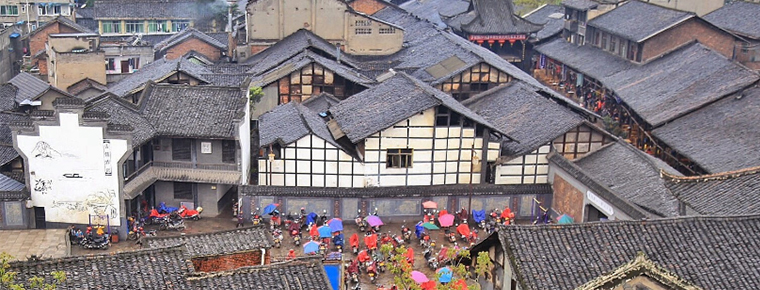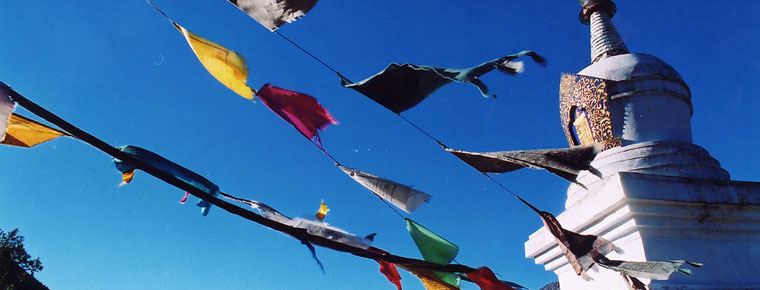Legend of Dayu
Legend of Dayu
Dayu's water control is a great project in the ancient times of our country. It once benefited mankind and became a symbol of the strength and wisdom of the ancient people of our country. Until the Spring and Autumn Period more than 1,000 years later, in the first year of Zhao Dynasty (541 BC), a man named Liu Dinggong at that time also said, "Mei Yugong, Ming De is far away." Weiyu, my fish! " It means that Yu's contribution is really great, and his legacy to mankind has far-reaching impact. Historians also have textual research, in our ancient bronze inscriptions, there are also records about Yu Zhishui, saying that he is "the people who calm water and stabilize Jiuzhou". This shows that Yuzhi flood control is a very long and common myth.
According to legend, Yu managed the Yellow River successfully and succeeded to the throne by the concession of Shun and Chan. Under the support of the princes, King Yu officially assumed the throne, taking Yangcheng as the capital, or Pingyang as the capital (or in Anyi or Jinyang) , the name of the country Xia. In Tang Dynasty, Danzhu was feuded, and all the feudalists were in Yu. Yu was the first emperor of the Xia Dynasty, so later generations also called him Xia Yu.
On May 23, 2011, Yu's legend was approved by the State Council to be included in the third batch of national intangible cultural heritage list.
Historical Origin
Chinese civilization has a long history. From about 1.7 million to 45,000 years ago, the primitive culture created by our ancestors was the source of Chinese civilization. China is the country with the largest number of ancient human cultural relics and an important region of the origin of world civilization. Due to the development of social productive forces, the long primitive society finally came to an end. The establishment of the Xia Dynasty in 2070 BC marked the end of primitive society and the beginning of slave society in China.
The Chinese call themselves "descendants of Yan Huang" and "the first ancestor of humanities" and the legends of Yan Di, Huang Di, Chiyou and Yao, Shun and Yu reflect the social situation in the late primitive period of our country. It should be noted that the reason why the Yellow Emperor is respected by future generations is that he has made outstanding contributions to the formation and development of the Chinese nation, is the ancestor of the Chinese nation, is the founder of Chinese civilization, that is, "the first ancestor of humanity". There are two points to be grasped in the system of Zen concession: one is the time when it was implemented, which is the legendary period of Yao, Shun and Yu; the other is its essence, which is a system of democratically selecting the leaders of tribal alliances.
In Shun's time, the Yellow River Basin flooded, causing serious disasters. Shun appointed Yu to lead water harnessing. Yu led people to use dredging methods to bring floods into rivers and oceans. After 13 years of hard work, the flood was finally overcome. In the process of water control, Yu worked hard day and night. Later generations highly praised his achievements in water control, called "Dayu".
By Yu's time, class had already emerged and our primitive society was heading for disintegration. It is said that Yu's family is very rich. His father built an earthen city to protect his family's property. When Yu became the leader of the tribal alliance, he conquered other tribes by force and regarded captives as slaves. When the tribal alliance meeting is held, all the leaders present at the meeting will bring property to Yu. Once, when a tribal leader was late for a meeting, Yu killed him.
Today there are more than 300,000 Qiang people, mainly distributed in Wenchuan, Lixian, Maoxian and Songpan counties in Aba Tibetan and Qiang Autonomous Prefecture of Sichuan Province, and in Beichuan Qiang Autonomous County of Mianyang City adjacent to this area. The Qiang people are an old and young people. Its ancient history can be traced back to the Xia Dynasty 4000 years ago. According to legend, Dayu, the founder of Xia Dynasty and the hero of water control of the Chinese nation, grew up and rose in Qiangdi of Northwest Sichuan. It is said that the Qiang nationality is young because it was formally determined as a nation after the founding of the People's Republic of China. Today, the Qiang people mainly live in the northwest of Sichuan, and a small number live in Tongren area of Guizhou, which was migrated from Sichuan in the Ming Dynasty.
Dayu has a great reputation in our country. Many people know that the relationship between Dayu and the Qiang people began. The author was invited to visit the place where Dayu was born in the legend of "Yuxue" in Beichuan. Yuxue is located in Yuli Township in the central part of Beichuan County. There are Shinu Mountain and Cliff Ganquan. It is said that Dayu's mother, the Virgin Mother, lived in this mountain and drank the water of Ganquan at first, which gave birth to Dayu. On the opposite side of Yu Point, the local people built Yu Temple to commemorate Dayu from Tang Dynasty at the latest. For example, the Dayu Memorial Hall and a series of antique buildings.
What is the relationship between Dayu and Qiang people? There are many historical records in ancient China. As early as the Warring States Period, Dayu was born in Shiniu in the west. In the Han Dynasty, the orthodox documents mostly said that "Yu Sheng Xiqiang" or "Yu Xing Xiqiang", which was recorded in the inscriptions at that time. One noteworthy phenomenon is that there are many legends and birthplaces of Dayu in today's Qiang nationality areas. For example, in Wenchuan County, Mianchi Town, Lixian Tonghua Town, Shifang County, Lianping and other places, there are "Shinushan" and "Yuxue" monuments. This is because people in the Han Dynasty said that "Yu Sheng Guangrou Shinu". At that time, Guangrou County was a vast area, including almost all the above areas. In addition, this area had always been a Qiang-inhabited area, where the Qiang worshiped Dayu, so his legends and relics naturally spread throughout the Qiang area. (Source: Digest Author: Li Shaoming)
primary coverage
Version 1
Sima Qian wrote Historical Records in the Western Han Dynasty. At that time, ancient Chinese and Chinese characters were basically unified, so the author called the legend of Yu in Historical Records as the Chinese version of the legend of Yu. Historical Records concentrated the legend of Yu into Xia Benji, making it the official history of Xia Yu. In other chapters, Shiqian sometimes leads to Yu legend. For example, in the Chronology of the Six Kingdoms, it says, "Yu Xing was born in Xiqiang". However, the history of Xia Yu in Xia Benji is not detailed, which makes it impossible to know when and where Yu was born, where he started his business, and where he died. For this reason, the place names of "Xiqiang", "Tushan", "Huiji" and "Yuxue" mentioned by Shiqian have become the eternal mystery of controversy. However, we should also see that Shiqian's record was the mainstream theory of various schools of thought at that time. Although its content has long been fragmented, in the eyes of people at that time, Yu's main history is like this. For more than two thousand years, the Chinese version of Yu's legend represented by Historical Records has in fact become the orthodoxy of Yu's history.
According to the biography of Shiji Dawan, Sima Qian saw Shanhai Jing. He said, "I dare not say anything about all the monsters in Yubenji and Shanhai Jing." Yubenji has been lost and Shanhai Jing still exists today. Shiqian, however, regards the words and deeds of the two books as "monsters" and "dare not speak". It can be seen that the language and words of the two books are weird and unclear words, which Shi Qian did not understand and therefore did not quote. At that time, Liu Xin pointed out in Shangshan Haijing Table that "those who wrote Shanhai Jing came from the time of Tangyu". He also said that "Gong had no power, and Emperor Yao made Yu succeed." It indicates that the scripture contains the story of Gong Yu. About 400 years later, Guo Pu in the Eastern Jin Dynasty talked about "no wonder" in "The Book of Comments on Mountains and Seas", and declared that "The Book of Mountains and Seas" was "the trace of summer". Studies have proved that Shanhai Jing is indeed a kind of Yu Shu. Sima Qian has passed it by without saying that it is not a regret.
However, we should also say two fair words for Shiqian. Why did he mention Yubenji and Shanhai Jing in the postscript of Dawan Liezhuan? Let's take a close look at the place names mentioned by Zhang Qian in his mission to the Western Regions, which are actually related to Xia Yu and Yu Shun, such as "Daxia" and "Yushui". Yujian Daxia, Shun married Yao's second daughter in Yushui, which is a legend in written records. In the existing Book of Mountains and Seas, Yushui has evolved into "Yushui", but it still remembers the summer. Sima Qian didn't say it clearly, but he probably thought about it; at least it showed that he should have something to do with Yu Benji and Shan Hai Jing when he read Zhang Qian's Daxia, Yushui, even Yongzhang and Shubu. Otherwise, would it be superfluous to mention the two books here? Sima Qian is a great historian and handles historical materials very rigorously. Although he wrote the Yellow Emperor at the beginning of the Five Emperors'Benji, he said in his postscript: "Shangshu has only been written since Yao, but Baijiayan Huangdi." It can be seen that there are also historical books that do not talk about the Yellow Emperor. Maybe it is the truth. In Xia Benji, he wrote in the main text: "Ten years, Emperor Yudong went hunting, as for the collapse of the Guiji." In the postscript, he said, "Or maybe Yu Hui's princes in the south of the Yangtze River collapsed due to meritorious work, because of their burial Yan, life and day audits. The auditor, the accountant." Although there is sand in Shiqian's method of dealing with history, gold will not be omitted.
The legends of Yu that Sima Qian came into contact with actually used the materials of the Qiang language version or the Qiang-Chinese fusion language version; because they had been differentiated or even alienated at that time, he had to doubt and sometimes doubted correctly. For example, "Jiangnan" in "Jiangnan of Yuhui princes" is actually the inverted phrase "Nanjiang" of Shu people. "Hainei East Classic" cloud: "Nanjiang out of the mountains, mountains in the west of the city capital." Alpine mountain is the ancient name of Minshan, the city is "capital city", which refers to "Guangdu" (also known as "Duguang"). This is the "Yangcheng" of Yudu, and its place is the "Jiuji". The Scripture writes "Badger" or "Audit", and Shi Qian writes "Auditor, Accountant." Footnote is a phonetic word. "Accounting" is the combination of painting and water, which should be called "painting". Because of its shape, the Scriptures have changed it into "painting", "painting skillfully" and "painting in columns". This is the two waters of Gannan. The "Jishui" in the north is called the "Beijiang", which is the Bailong River today. The "Tushui" in the south is called the "Nanjiang", which is the Baishui River today. Beijiang River and Nanjiang River meet in Bikou today, so they are called "Huiji" (inverted term "Gathering"), also known as ugly water, and the mountain where they meet is called Qiaotu Mountain. "The Great Wilderness South Classic" said: "Qiao Tu Mountain ("Qiao Tu Zhi Shan") ("Qiao Tu Zhi Shan")("Qiao Tu Zhi Shan"). One Yu attacked the clouds and rain." Guo Pu's Note: "Attacking is to cut down its trees." This is Yu's record in the auditor's office. Yu's visit to the auditorium was not a hunting tour, but "all the merchants who resigned from Shun were in Yangcheng." The original place of Kaoyang City is "Duguang" in Wenxian County of Gannan Province. It is called "Yangcheng" because the city pool is on the North Bank of Nanjiang River and the water north is Yangyang.
In Shan Hai Jing, Yu's Qiang language is called "chin hairpin" and the Qiang language of Emperor Zao is called "Gu Feng" (that is, Ku, also known as "Guan Hu"). There is an alternating relationship between Yu King and Guwang King. Because of the differentiation of the name of the people, the later generations separated Yu and Zhunxu, Gu and Dizuo into two persons, which resulted in the formation of a series of Qianxu lines in ancient history. Sima Qian wrote Zhuanxuan and Dizuo into the Five Emperors'Benji, which formed a great mistake in ancient Chinese history. Modern historians can't find the origin of Qianxuan. They often mix it with Emperor Shun. The reason is self-evident. Moreover, Yu's Qiang-Chinese fusion is called "Shu", and Yang Xiong wrote "The Book of King Shu" in the Western Han Dynasty. People at that time, including Shiqian, did not regard the history of ancient Shu as Yu's history, but regarded it as the local chronicle of the princes. From this we can see that the history of Yu in the Western Han Dynasty was not only sinicized, but also alienated.
Sima Qian's Xia Ben Ji is the official history of the Chinese version of Yu. The Qian and Di Zao in his Five Emperors Ben Ji are the alienation and Sinicization of Yu and Gu, and become the ancient emperor's history of the Chinese version. The Chinese version of Yu's legend, of course, includes other books, such as Shangshu and Wuyue Chunqiu. They are characterized by the direct name of Yu, which is the Han name of the so-called Prince of the Xia Dynasty.
Version 2
The special books on the history of ancient Shu are famous for Yang Xiong's "The Book of King Shu" in the Western Han Dynasty and Chang Bing's "Hua Yang Guo Zhi" in the Jin Dynasty. The ancient Shu recorded in the two books is "Shu History" on the surface, but actually "Yu". The Book of the King of Shu purely talks about the King of Shu, while the Records of Huayang State mentions that Yu was the ancestor of Bashu. The fusion version of ancient Qiang and Chinese represented by The Book of King Shu is characterized by calling Yu "Shu".
The fusion and differentiation of ancient Qiang and Chinese is still a hypothesis. Shu here is a worm in the Han Dynasty. Shuowen: "Yu, worms too." So Yu is called "silkworm clump" in the history of Shu, and Shuowen explains "Shu, Kuizhong silkworm". It can be seen that their words are silkworm. There are silkworms in Shu, but it has changed. This is the disguise of the totem of clan. "Overseas South Classic" says: "Insects are snakes, snakes are fish." Guo Pu commented, "Take insects as snakes, snakes as fish." That is to say, "Shu" is both a snake and a fish. "Shu" in the ancient Qiang language called "Zhuanxu", which means fish. "The Great Wilderness Western Classic" said in the sub-myth: "Snakes are turned into fish, and when they die, they will recover." In language logic, Shu became the "fish" of the ancient Qiang language and the "Yu" of the Chinese language. It can be seen that Yuweiyu is a translation and Shuweiyu is a transliteration of sinicization. Therefore, King Shu was King Yu in Han Dynasty and King Fish in Qiang Dynasty. In Shu characters, we can see the fusion and differentiation of ancient Qiang and Chinese, as well as the origin of transliteration. However, there is another way of expressing Shu characters, that is, the morphological description of "Shu" totem. We pointed out in Shi Shu (published in the fourth issue of 2005) that Shu characters are totems composed of two "one eye, one worm (silkworm)", so Shu characters have two orders and two insects in the decoration. Binocular and binocular insects are described as "silkworm clump (heavy)" and "eye vertical (heavy)" in Huayang Guozhi. Therefore, Shu King Benji also describes Shu as "silkworm clump". Silkworm bushes are "two worms" or "double snakes". The Book of Mountains and Seas is written as "two green snakes" or "two yellow snakes". The ancient Qiang language expresses that the two snakes call "servant cattle" ("things in the wilderness"), literally translated as "snake button", meaning that two snakes are linked. Snake Nut is written in Han literature as "Shi Nu", such as "Yu Sheng Shi Nu", which means Yu Sheng in Shu. The "Baishi" worshipped by today's Qiang compatriots refers to "Boshu", or "Boyu".
"The Book of King Shu" and "Hua Yang Guo Zhi" refer to the predecessor of Shu as "silkworm clump", referring to the main silkworm family of Shu. Shu's Muzhu clan is "Muzhong". It is "Ba snake". "Hua Yang Guo Zhi" said: "Shu is the country, originated from the Emperor of Man, bound with Ba." That is to say, Ba and Shu used to be a United clan, that is, there was Ba in Shu and there was Shu in Ba. Chang Bing recorded Gong Yu in Ba Zhi and said in Shu Zhi: "Shu Hou Silkworm Cluster, whose purpose is vertical, is first king", which shows that he separated Ba and Shu. In fact, Ba-Shu originally belonged to a clan. Only in the later period of Yu did Ba and Shu split up, which is what Shu historians often say is that there is a feud between Ba and Shu. Ancient "Bashu" should be a clan, expressed by a "Shu" word, while the "Li" clan, expressed by the word "bird". Therefore, Shu, Ba and Oriole are the three nationalities of the country. The Western Classic of the Great Wilderness is expressed by the word "bird Shu". The word "bird shu" is called "fish fu". The Book of Mountains and Seas is called "fish woman". Clouds "have fish (shu), partial (ba), withered (read like aunt), famous Japanese fish woman (fu)." "The Book of King Shu" and "Hua Yang Guo Zhi" are also "Yu Fu". Li Bai's poem "Shu Dao Nan" says "Silkworm bushes and Yu Fu, why is the founding of the country at a loss". It can be seen that later generations have differentiated the Fu and confused the logic of history. From this we can see that the "Shu" in the Qiang-Chinese fusion edition is biased to regard it as a silkworm clump, and divides Shu, Ba and Hu into a superfluous fish king.
In the Qiang-Chinese fusion version of Yu's legend, there is no mention of Yu's name, but a prominent word "Shu". This history of King Shu is actually the history of King Yu, which was misjudged as the history of local chronicles by historians because it had not been declassified for a long time.
Version 3
Guo Pu calls it "the trail of the summer queen" in "The Book of Mountains and Seas" in "The Book of Comments on Mountains and Seas", while Mr. Meng Wentong, a close friend, also calls it "the book of Shu people" in "The Screening of Ancient Land". This is also the theory that the study of mountains and seas points out the confusion. As for Shu and Xia (i.e. Yu), historians have put forward new ideas, such as the "Shu and Xia homology theory" put forward by Mr. Lin Xiang in Shu and Xia. When discussing the relationship between Shuxia and Zhuanxuan, Mr. Li Xueqin once said that "it is not accidental that Xia and Shudu originated from Zhuanxuan" when discussing the Imperial Family and the culture of Bashu. In particular, it should be pointed out that in the 1980s, Mr. Deng Shaoqin quoted Mr. Wen Shaofeng's remarks in his Exploration of Historic Sites of Bashu: "Xia Ye, Shu Ye, Chin-chin Ye, belong to the same clan." In my opinion, this should be the forerunner of the "Shu Xia Zhuan identical theory".
Although Shanhai Jing is a record book of Chinese characters, it contains many Qiang-Chinese fusion languages, and even "ancient Qiang language" with phonetic falsification or transliteration of Chinese characters. The so-called ancient Qiang language is a vocabulary which is recorded by Chinese characters. Its sound and meaning are similar to those of the present Qiang language. In this sense, Shanhai Jing is a version of the ancient Qiang language which represents the legend of Yu. Although the Scriptures are also mixed with Yu and Shu characters, the characteristics of their versions are that Yu is called the ancient Qiang language "Zhuanxu".
The Book of Mountains and Seas is a record of the Yu Dynasty. Ruiqi is Yu's Qiang language name, which means "fish" and the combination of Qiang and Chinese as "Shu". In the Book of Mountains and Seas, all the names of Chuan are Yu's, as long as we are consistent with each other. Ancient Qiang language calls "Zhuanxuan (Yu) as"fish", so it forms many descriptions of fish totem. For example, the "Overseas South Classic" says "snake is a fish"; the "Great Wilderness West Classic" also says "snake is turned into a fish, that is to say, recovery after death" and calls the "country with a fish"; there are also sub-mythological fish, "Rajas" in the Western Three Classics (pictured), "fishing at sea" and "fishing" in the Great Wilderness South Classic, and "Overseas South Classic". "One fish in each hand", "Fish body with human face" in Hainei Nanjing and so on. Ancient Qiang language called "catching" for snakes, "fishing" for "snake fish", that is, "Bashu", "fish-eating" for reading a fish, saying "fish clan", referring to Shu's marriage clan; "skate" for Yu, "Xia Benji" for "Yu, a famous Japanese civilian life". In The Book of Mountains and Seas, Wenwang, Salmon and Wenshi are not widely known. "Ray" is the "bird fish", which is pronounced as "swaying" in ancient bird pronunciation. The first Sutra of Nanshan writes "swaying" for the knowledgeable bird, and the Eastern Sutra of Hainei writes "dwelling" for the crane bird, which is the internal evidence. Bird and fish are the description of the skull (fish and bird) emblem, because the bird is an oriole, also known as a fish pole. So Yu is also the King of Fish Fus. In Hainei Jing, Yu's "summer image" is called "Yanwei", and Guo Pu annotates "Venezuela". Venezuela is the inverted "Po Wei" in the literature. Ancient Qiang language calls "jian" for fish, and "wei" for birds. It is translated as "bird and fish", that is, fish dung.
"Xia" is the whole body image of Yu offering sacrifices to heaven. Only after having the word "Xia", can we call Yu "Xia Hou" (see my article "Shixia", published in the first issue of this magazine in 2007). Shanhai Jing is not known as Xia Yu or Xia Hou. It only refers to Yu's court as the "Xian Dynasty" (the Scripture is inverted as "Korea"). "Xian Dynasty" is the Qiang-Chinese fusion language of "Yu Dynasty". Yu spoke of "fish" in Chinese and called "Yu" as a sheep in Qiang. Ancient Chinese characters are so simple that they combined fish and sheep as "fresh", so the Yu Dynasty became "fresh". When the Northern Classic of the Great Wilderness talks about the Gongyu family, it mentions a "Rong Xuan King". This is a derivative of Yu. "Xuan" is the false of "fresh", and "Rong" is the form of "I". The form of "I" is "Rong". Mr. Wu Qichang said it 70 years ago (Book 7 of Ancient History Discrimination). Ancient and modern Qiang language birds call "I" (A) and "Wu" (Wei). Therefore, Rong Xuan Wang can be translated as King of Birds and Fishes or King of Birds and Fresh Birds, that is, King Yu. History proves that King Yu established the so-called "Xia Dynasty", so Shu should be before Xia Dynasty. Historians often think that Xia was mistaken before Shu. "Huayang Guozhi" in "Bazhi" and "Shuzhi" respectively said that the capital of Ba and Shu "Li Xia, Shang, Zhou", which is not Chang Bing's fiction, should have historical data. King Shu was King Yu, who established the Xian Dynasty, the Yu Dynasty, which was later called the Xia Dynasty.
In the Book of Mountains and Seas, the chin refers to Yu, from which we can inspect Yu's birthplace and burial place. "The Great Wilderness BeiJing" cloud:
Beyond the Northeast Sea, in the wilderness, between rivers and rivers, Mount Yuzhi, Emperor Zhuanxiang and Jiushuan are buried. There is Chize water, the name of the Japanese fengyuan. There are three mulberries without branches, Shen Yuan in Qiuxi and Zhuanxiang bathed.
The Scripture "bathing" is not bathing, but the ancient Qiang language "amniotic fluid" refers to "fertility". Zhunxuan was born in Shenyuan, which is the pronunciation of Shu. His voice is close to snakes or trees, and he affirms "Snake Yuan", that is, Shuyuan. Yu was born in Shuyuan. Yuan refers to the upstream of Shushui, that is, Shushui. Shushui in the literature as "Nao" or "turbid", the "Hainei Jing" said, "take Nao Zi Ri Ah Nv, born Emperor Zhuan." Ancient Shushui refers to Fujiang River. There are many sources in the upper reaches of Fujiang River. This saying "Chize water, the name of the day Fengyuan". Fengyuan is Fuyuan, which can be translated into Snake Yuan and Fish Yuan, because it is Shuyuan. "Chize water" says "Qingbaishui", which can be translated into "Qingbaihe River". Qingbai River is now called "Qingpian (Bai) River" in Beichuan County. Beichuan County is "Yuli", and there are "Yuxue" and other places of interest, which should be the birthplace of Yu. We'll discuss it in a special article. Yu's burial place is in the "Guiji", which we have mentioned before. The words "between rivers and rivers" and "Mount Fuyu" in the Scriptures provide another proof. Between rivers means between two rivers. Without Jishui and Tushui (Beijiang and Nanjiang), it is impossible to talk about the relationship between the two rivers, nor about the "harvested water" of the mixed Jishui, that is, the "Mount of Jiji". The recovery of disguised records shows that Yu's burial place should be in Wenxian County, Gannan Province. "Fu Yu" is the inverted version of "Fish Woman (Fu)". "Fuyu" is also called "Panyu", in which there are changes in lip tones. "Panyu" should be pronounced as "Boyu", so "Mount Fuyu" is also called "Panyu" (sound wave); because of its tomb, it is called "Panzhong Mountain". Lvzhong Mountain should be the mountain of Yuzhong. Jiang Tingxi's Shangshu Geographical Interpretation in the early Qing Dynasty said that the tombs were divided into North and south, roughly in the present Gannan region. "Mount Fuyu" resembles Jiang's "Nanpan Tomb", which lies to the west of Ningqiang in Southern Shaanxi and is located in the two river basins. There is no archaeological discovery of Yu's burial site. The author suspects that there may be clues in Yulei Mountain, and that Bikou in Yulei Mountain may be Pankou, which is just a record.
Shanhai Jing, as a version of the Qiang language of Yu legend, has precious historical value. In Shanhai Jing, we preliminarily counted more than 500 ancient Qiang dialects with phonetic or semi-translated Chinese characters, which is of great significance for the reply to the legends of Yu and the true features of Chinese ancient history. Through a brief analysis of the three versions of Yu's legend, it is not difficult to find that historians in the past divided Yu's history into Xia, Shu and Qianxu, which is a big mistake in Chinese ancient history.
Current situation of inheritance
June 2011 was selected as the third batch of intangible cultural heritage list.

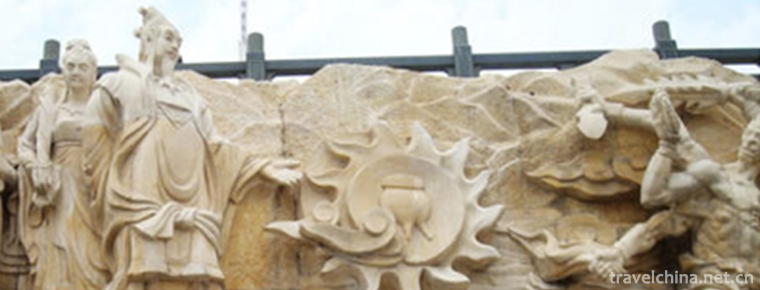
-
Shoulds ancestral hall
Yanmenguan Scenic Spot is located in the northern part of Daizhou ancient city. South-controlled Central Plains and North-controlled Moyuan are grand military defense projects of ancient Chinese passe.
Views: 206 Time 2018-11-24 -
Beidahuang Modern Agricultural Park
Beidahuang Modern Agricultural Park, located at No. 146 Xiangfu Road, Xiangfang District, Harbin City, covers an area of 667,000 square meters and is a "national AAAA-level tourist attraction&quo.
Views: 162 Time 2018-12-26 -
Flower Drum Opera
Huagu opera, a kind of local opera in China, has the most identical names in the national local opera, usually referring to Hunan Huagu opera. Hubei, Anhui, Jiangxi, Henan, Shaanxi and other.
Views: 152 Time 2019-05-04 -
Yidege Ink Making Skills
Yidege is a local traditional handicraft in Beijing. It is well-known for producing ink. The products have bright ink, rich and light colors, fluent writing, moderate concentration, strong fragrance, .
Views: 171 Time 2019-07-11 -
Shaoshutun and Munona
Manmaisankang National AAA Scenic Area, where every day the love story between Zhaoshu Tun and the Peacock Princess Munona, beautiful music, more than 100 peacocks falling from the sky, the beautiful .
Views: 96 Time 2019-07-25 -
Bai Pu
Bai Po (1226 - about 1306), formerly known as "Heng", Ren Fu, later renamed Pu, the word is too plain, Lanlan Valley, Han nationality, ancestral home state (now Shanxi) Hequ ) Nanjing's Kaif.
Views: 167 Time 2019-09-11 -
Bao Zheng Bao Qing Tian
Bao Zheng (999 - July 3, 1062), He Xi Ren. Luzhou Hefei (now) Anhui Hefei Feidong People. Northern Song Dynasty Famous ministers..
Views: 171 Time 2019-09-11 -
Luocheng ancient town
Luocheng ancient town, known as "China's Noah Ark", is located in the northeast of Qianwei County, 60 kilometers away from Leshan City and 25 kilometers away from Qianwei county. There are seven ethnic groups, Han, Hui, Yi, man, Tibetan, Li and Miao. .
Views: 85 Time 2020-10-15 -
Tibetan lads are really popular
Who is Ding Zhen? He is a Tibetan Boy, 20 years old. On November 25, a tourism propaganda film "Ding Zhen's world" made him popular all over the country. Netizens once thought that his hometown was in Tibet, and the photographer could not help but clarify that Ding Zhen was from Litang County, Ganzi, Sichuan Province..
Views: 95 Time 2020-12-07 -
Neijiangs first industry
In 2019, the sown area of grain crops in Neijiang is 309600 ha, an increase of 0.3% over the previous year; the sown area of oil crops is 79900 ha, an increase of 0.4%; and the sown area of vegetables is 78100 ha, an increase of 2.3%. The total grain output .
Views: 298 Time 2020-12-16 -
Yibin tertiary industry
In 2019, the real estate development investment in Yibin City is 35.74 billion yuan, an increase of 14.5% over the previous year. Among them, residential investment was 27.018 billion yuan, an increase of 18.0%; the investment of office building was 4.
Views: 370 Time 2020-12-18 -
Guangan landform
The topography of Guang'an City is fan-shaped distributed between the hills and parallel valleys in eastern Sichuan, which belongs to the Sichuan basin bottom extending to the basin periphery gradually. The Huaying mountains, which run through the so.
Views: 102 Time 2020-12-19
